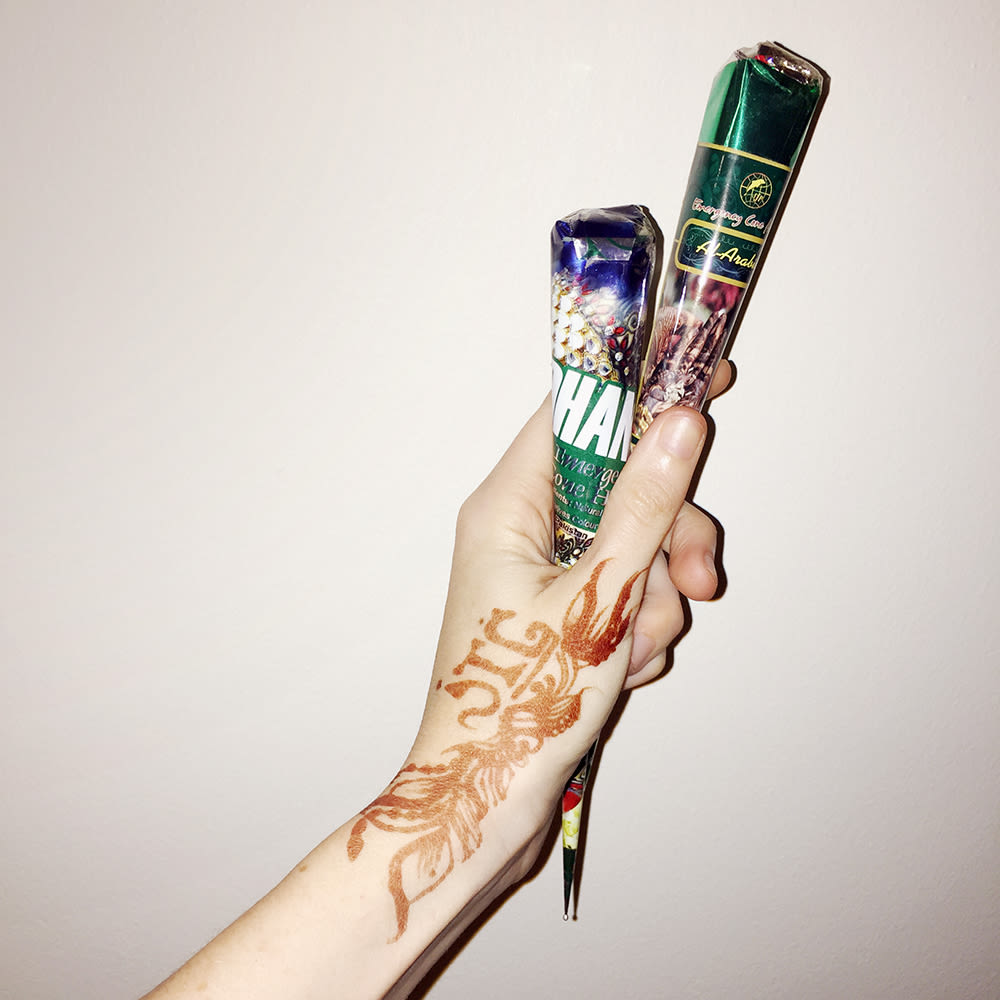These days, when I visit Qatar, I usually come home sporting a rust-red, intricately patterned henna tattoo. Lucky for me, one of my former students, fashion designer Rabab Abdulla, is a henna artist regularly hired by our university for her talents during special events. She’s lightning fast and super knowledgeable, with years of experience decorating the hands and feet of Doha for weddings, festivals, and other celebratory occasions. I recently watched her take on over 20 patrons in a two-hour period, and no two of her beautiful, hand-drawn designs were the same (and she obliged my request for an ITG-lettered one).
I have never (and probably never will) go in for a real tattoo, so the weeks when I sport henna are a novelty—catching a glimpse of it while I go about my daily tasks is surprisingly exhilarating—like an accessory you're still over the moon about and don't have to take off because it's not weather appropriate or too delicate to wear every day. I’ve written in the past about henna’s religious and cultural implications. This time, I had the chance to talk with Rabab about various regional motifs.
“Arabic patterns are more open,” she explained. “They have larger designs flowing down the hand from a few fingers. But Indian mehndi [different name, same practice] covers the entire hand and all the fingers. We try to fill in all the empty space.” Both styles will incorporate patterns on the palm as well. Teardrops, paisley, flowers, and gestural vines are typical in Arabic henna, and they're incorporated in mehndi too, along with peacocks, intricate lattice work (think Rihanna), circular designs believed to deflect the evil eye, etc. Like any traditional form of ornamentation, preferred henna motifs are subject to trends and updates over time.
“Geometric styles from North Africa are becoming more and more popular today,” Rabab said of her current work in Qatar. “The patterns include squares and simple shapes.” The deeper the hue on the skin, the better, meaning the quest for the highest quality commercially sold henna is almost never ending in the region. She prefers to work with a cone of paste; the best she’s found is a brand her father discovered in Saudi Arabia—it’s very pure and takes almost no time to soak into the skin. As far as dye preservation is concerned, Rabab suggests that high quality pigment needs little beyond the average daily moisturizer for maintenance, though many tout the benefits of olive oil rubs or topical coatings of a sugar and lemon juice.
Here in the States, henna is a little harder to come by but by no means impossible. Whole Foods is a stockist of Earth Henna products, which offers both kits with patterns and individual henna applicators. Cheaper cones are also somewhat easy to find at local Indian and Middle Eastern grocery stores. On Instagram, a number of international henna practitioners are making names for themselves as style-runners. For those in search of inspiration for either family affairs or festival season, consider checking out @bluelotushennaportland of Portland, Ore.; @gloryofhennaof Los Angeles; @henna _nurahshenna out of Birmingham, England; New York’s own @brooklynhennaco; and the world-traveling @maplemehndi.
—Lauren Maas
Photo courtesy of the author.

